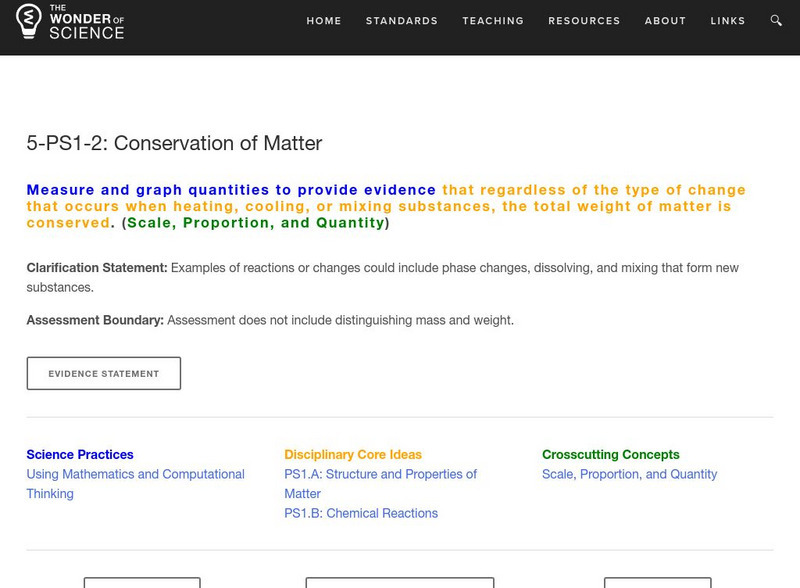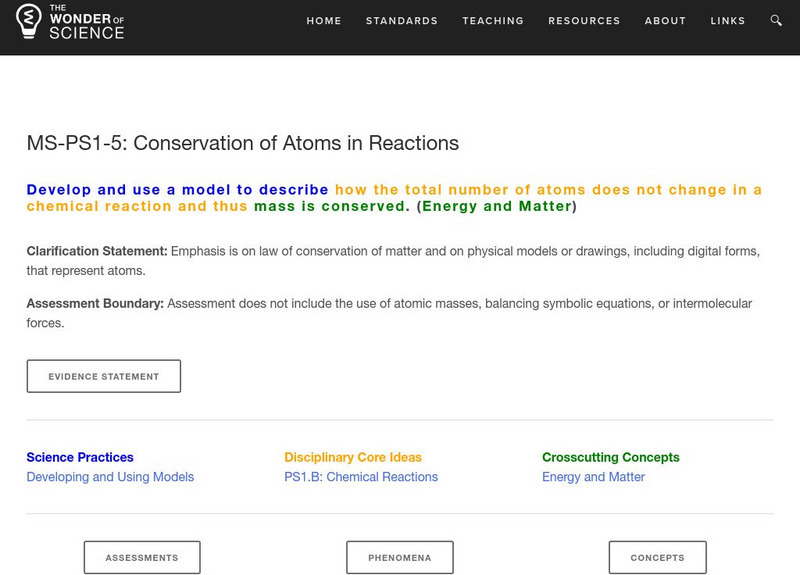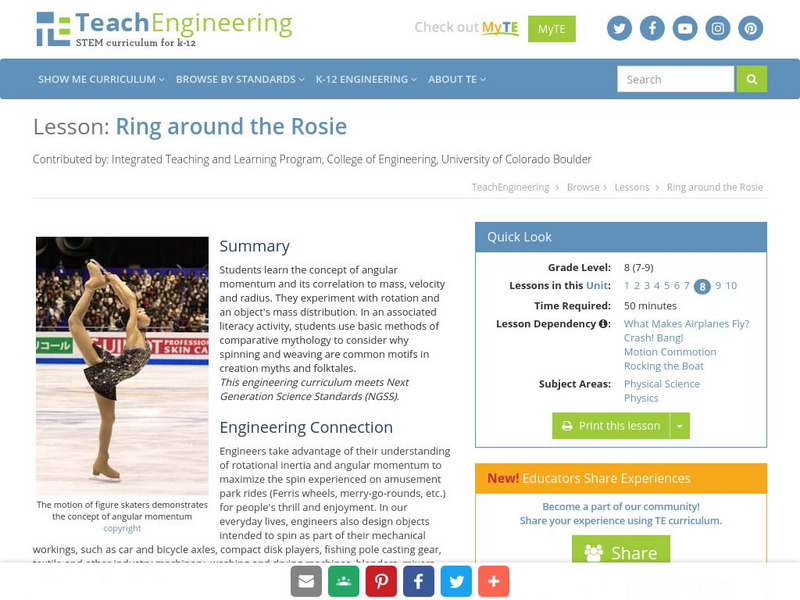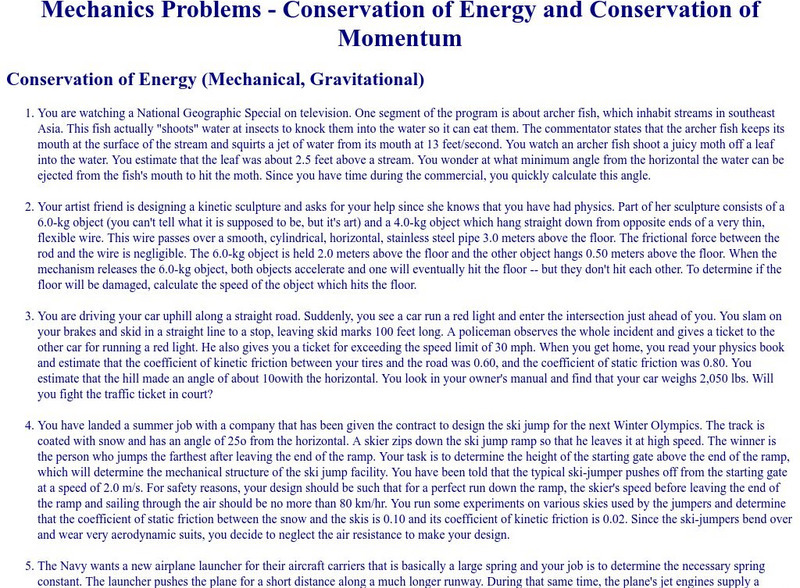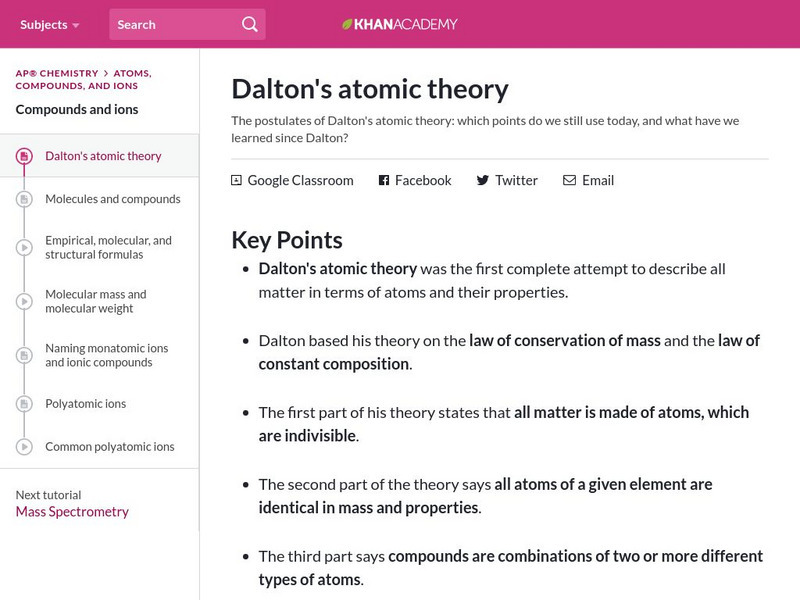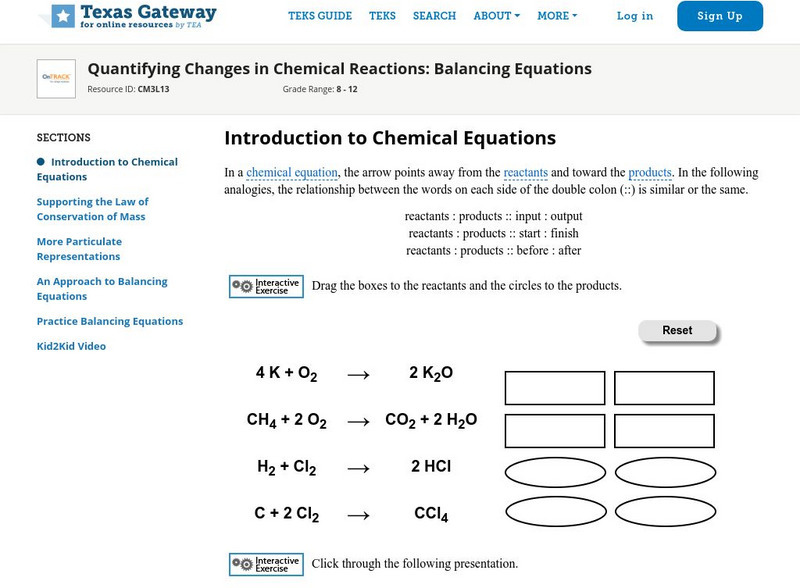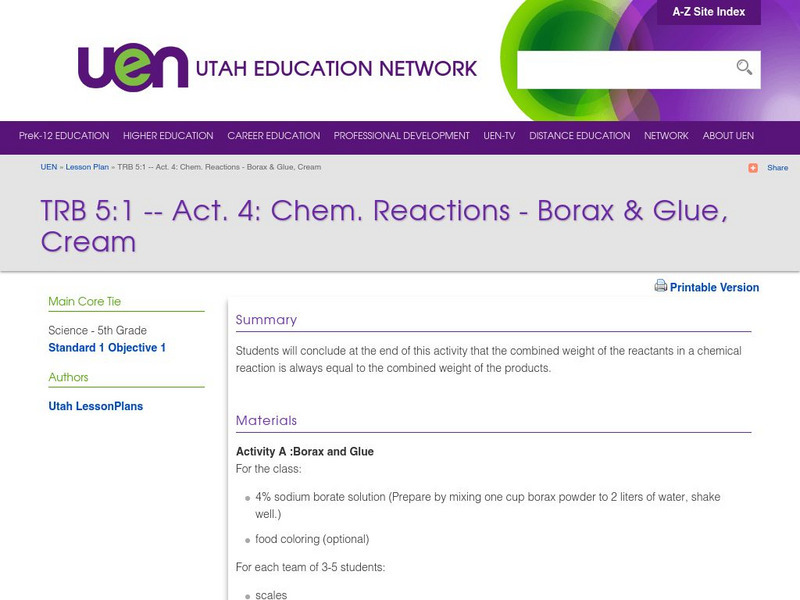University of Colorado
University of Colorado: Ph Et Interactive Simulations: Masses & Springs
Hang various mass weights on spring scales while you adjust the spring stiffness and damping in this online activity. Slow down the action, take it to another planet, or watch the amount of potential, thermal, and kinetic energy.
CPALMS
Florida State University Cpalms: Florida Students: Conservation of Mass Tutorial
Learn how mass is conserved in physical and chemical changes.
CK-12 Foundation
Ck 12: Fifth Grade: Physical Science: Physical and Chemical Changes in Matter
[Free Registration/Login may be required to access all resource tools.] Provides the definitions of physical and chemical changes in matter and gives examples. The law of conservation of mass is also described.
University of Colorado
University of Colorado: Ph Et Interactive Simulations: Masses and Springs
Use this interactive, animated lab to explore conservation of mechanical energy.
Open Curriculum
Open Curriculum: Conservation of Energy
This Kahn Academy tutorial helps students understand the principles of conservation of energy and mass. [10 min, 6 sec]
The Wonder of Science
The Wonder of Science: 5 Ps1 2: Conservation of Matter
On this site, find a variety of materials to help students understand the conservation of matter. Create lessons that allow students to measure and graph quantities that could show even if matter is heated, cooled or combined with other...
The Wonder of Science
The Wonder of Science: Ms Ps1 5: Conservation of Atoms in Reactions
Work samples, phenomena, assessment templates, and videos that directly address standard MS-PS1-5: conservation of atoms in reactions.
CK-12 Foundation
Ck 12: Heat
[Free Registration/Login may be required to access all resource tools.] Using the law of conservation of energy as a starting off point, students use the specific heat equation to perform calculations that relate mass, specific heat,...
CK-12 Foundation
Ck 12: Chemical Equations
[Free Registration/Login may be required to access all resource tools.] Students explore mass relations between reactants and products for a given chemical process, and practice balancing chemical equations.
Other
Laws of Thermodynamics
A page from the Fundamentals of Physical Geography site. Identifies, describes and elaborates upon the first, second, and third laws of thermodynamics.
Better Lesson
Better Lesson: Changing Matter:changing Matter: Is Weight the Same or Different?
Students conduct a hands-on investigation to determine how matter, changing state, effects the property of weight. Students will collect data and graph their results. Resources include step by step instructions, a data worksheet, videos...
TeachEngineering
Teach Engineering: Ring Around the Rosie
Students learn the concept of angular momentum and its correlation to mass, velocity and radius. They experiment with rotation and an object's mass distribution. In an associated literacy activity, students use basic methods of...
University of Colorado
University of Colorado: Ph Et Interactive Simulations: Pendulum Lab
An interactive simulation that teaches about periodic motion, simple harmonic motion, and conservation of energy. Observe one or two pendulums to determine how the swing is influenced by the length of the string, the mass of the pendulum...
University of Colorado
University of Colorado: Ph Et Interactive Simulations: Energy Skate Park
Explore kinetic, potential, and thermal energy as you send a skateboarder along several pre-built tracks, then design your own. Charts and graphs show the distribution of the different forms of energy, illustrating how the total energy...
University of Minnesota
University of Minnesota: Conservation of Momentum
This site provides a set of four Physics problems dealing with the conservation of momentum principle.
Georgia State University
Georgia State University: Hyper Physics: Energy Cycle From Plants to Animals
Find out about the essential role energy plays in cell function and in sustaining life. Trace energy transformations as they pass from one living thing to another.
Khan Academy
Khan Academy: Dalton's Atomic Theory
Resource investigates the beliefs of Dalton's atomic theory which consists of four parts. Which points do we still use today, and what have we learned since Dalton?
Khan Academy
Khan Academy: Dalton's Atomic Theory
An article describing Dalton's atomic theory. Learn how this theory was the first attempt to describe a fundamental part of matter, atoms. Article also discusses where the theory is incorrect based on the knowledge we have today.
Georgia Department of Education
Ga Virtual Learning: Chemistry: Chemical Formulas and Equations
In this interactive module, students are introduced to the most fundamental part of chemistry: chemical reactions and the formulas that accompany them.
Georgia Department of Education
Ga Virtual Learning: Ap Physics 1: Rotational Dynamics
Students learn about the Newtonian mechanics principle of conservation of angular momentum and the application in the quantum mechanical world.
Texas Education Agency
Texas Gateway: Balancing Equations
Learn how to balance equations in this tutorial. Tutorial includes videos, interactive activities, and practices.
Georgia Department of Education
Ga Virtual Learning: Chemistry: Stoichiometry
Through informational text, interactive practice problems, video clips, and real-world application, students are introduced to the science of Stoichiometry.
Science and Mathematics Initiative for Learning Enhancement (SMILE)
Smile: Momentum Conserved
This site by the Illinois Institute of Technology gives a Lab activity in which young scholars use a variety of toys to discover Newton's second law and momentum conservation. Newton's cradle, skate boards, and a toy motorcycle are...
Utah Education Network
Uen: Trb 5:1 Act. 4: Chem. Reactions Borax & Glue, Cream
For this experiment for Grade Five, students develop an understanding that chemical changes in matter do not affect the actual mass of the matter.







